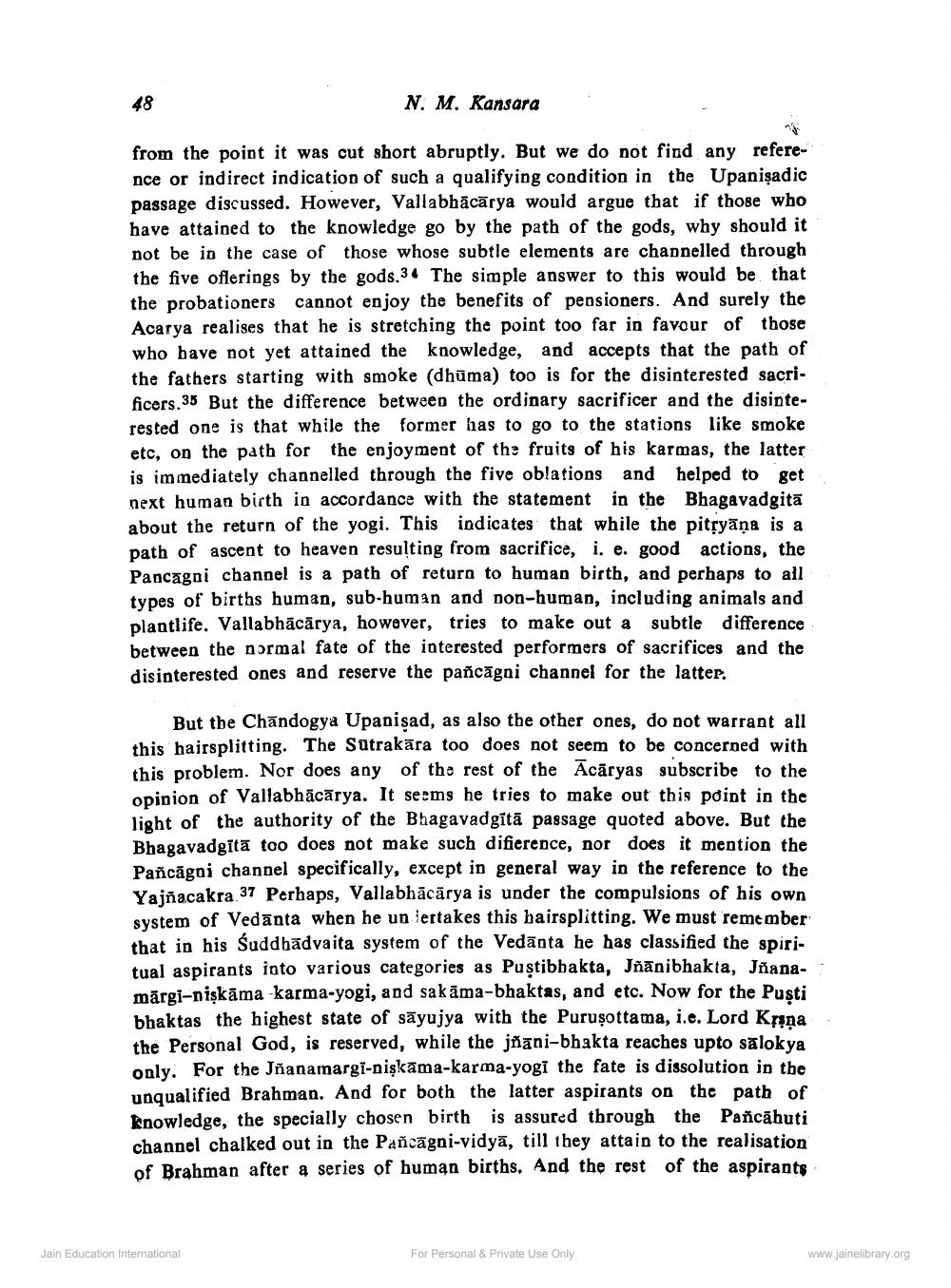________________
48
N. M. Kansara
from the point it was cut short abruptly. But we do not find any reference or indirect indication of such a qualifying condition in the Upanişadic passage discussed. However, Vallabhācārya would argue that if those who have attained to the knowledge go by the path of the gods, why should it not be in the case of those whose subtle elements are channelled through the five oflerings by the gods.34 The simple answer to this would be that the probationers cannot enjoy the benefits of pensioners. And surely the Acarya realises that he is stretching the point too far in favour of those who have not yet attained the knowledge, and accepts that the path of the fathers starting with smoke (dhūma) too is for the disinterested sacrificers. 35 But the difference between the ordinary sacrificer and the disinterested one is that while the former has to go to the stations like smoke etc, on the path for the enjoyment of the fruits of his karmas, the latter is immediately channelled through the five oblations and helped to get next human birth in accordance with the statement in the Bhagavadgitā about the return of the yogi. This indicates that while the pitryāṇa is a path of ascent to heaven resulting from sacrifice, i. e. good actions, the Pancagoi channel is a path of return to human birth, and perhaps to all types of births human, sub-human and non-human, including animals and plantlife. Vallabhācārya, however, tries to make out a subtle difference between the normal fate of the interested performers of sacrifices and the disinterested ones and reserve the pañcāgni channel for the latter.
But the Chandogya Upanisad, as also the other ones, do not warrant all this hairsplitting. The Satrakāra too does not seem to be concerned with this problem. Nor does any of the rest of the Ācāryas subscribe to the opinion of Vallabhācārya. It seems he tries to make out this point in the light of the authority of the Bhagavadgitā passage quoted above. But the Bhagavadgitā too does not make such difierence, nor does it mention the Pañcāgai channel specifically, except in general way in the reference to the Yajñacakra 37 Perhaps, Vallabhācārya is under the compulsions of his own system of Vedānta when he un iertakes this hairsplitting. We must remember that in his suddhādvaita system of the Vedānta he has classified the spiritual aspirants into various categories as Puștibhakta, Jõānibhakta, Jñanamārgi-niskāma -karma-yogi, and sakāma-bhaktas, and etc. Now for the Pusti bhaktas the highest state of sāyujya with the Purusottama, i.e. Lord Knina, the Personal God, is reserved, while the jñani-bhakta reaches upto sālokya only. For the Jñanamargi-niskāma-karma-yogi the fate is dissolution in the unqualified Brahman. And for both the latter aspirants on the path of knowledge, the specially chosen birth is assured through the Pañcāhuti channel chalked out in the Pañcāgni-vidyā, till they attain to the realisation of Brahman after a series of human births. And the rest of the aspirants
Jain Education International
For Personal & Private Use Only
www.jainelibrary.org




